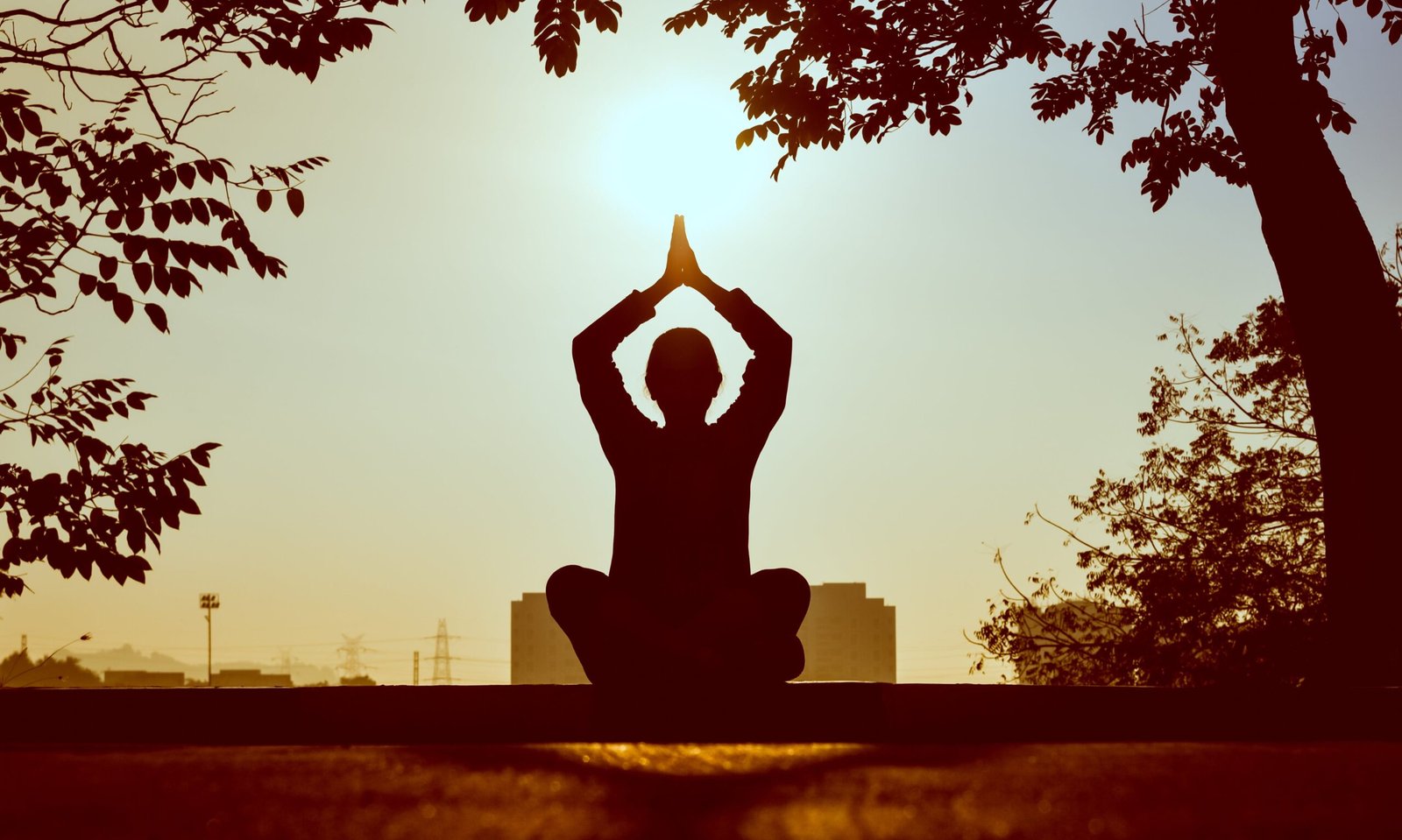Key Takeaway
Discover the meanings behind common Sanskrit terms used in yoga and how they form the foundation of pose names, enhancing your practice by connecting you to yoga’s ancient roots.
Have you recently been to a yoga class where the teacher called out the poses using Sanskrit names? Or do you keep hearing the same Sanskrit terms and wonder what they mean?
Understanding yoga Sanskrit words can feel confusing and overwhelming as a beginner yogi. But don’t worry, you don’t have to learn a whole new language to understand the posture your yoga teacher is cueing. In fact, understanding yoga Sanskrit poses is much easier than you think.
In this article, I’ll explain the most common Sanskrit words used in yoga classes and their meanings. I’ll also answer the question on every beginner yogi’s lips, ‘why is Sanskrit used in yoga classes anyway?’
Ready? Let’s dive into the world of Sanskrit!
Contents
- 1 10 Common Modifiers Used in Yoga Sanskrit Names
- 2 Other Common Yoga Sanskrit Names
- 3 Complete List Of English To Sanskrit Yoga Pose Translations
- 4 What is Sanskrit?
- 5 Why are Sanskrit words Used To Describe Yoga Poses?
- 6 Resources For Improving Your Sanskrit Knowledge
- 7 Final Thoughts On Yoga Sanskrit Poses
10 Common Modifiers Used in Yoga Sanskrit Names
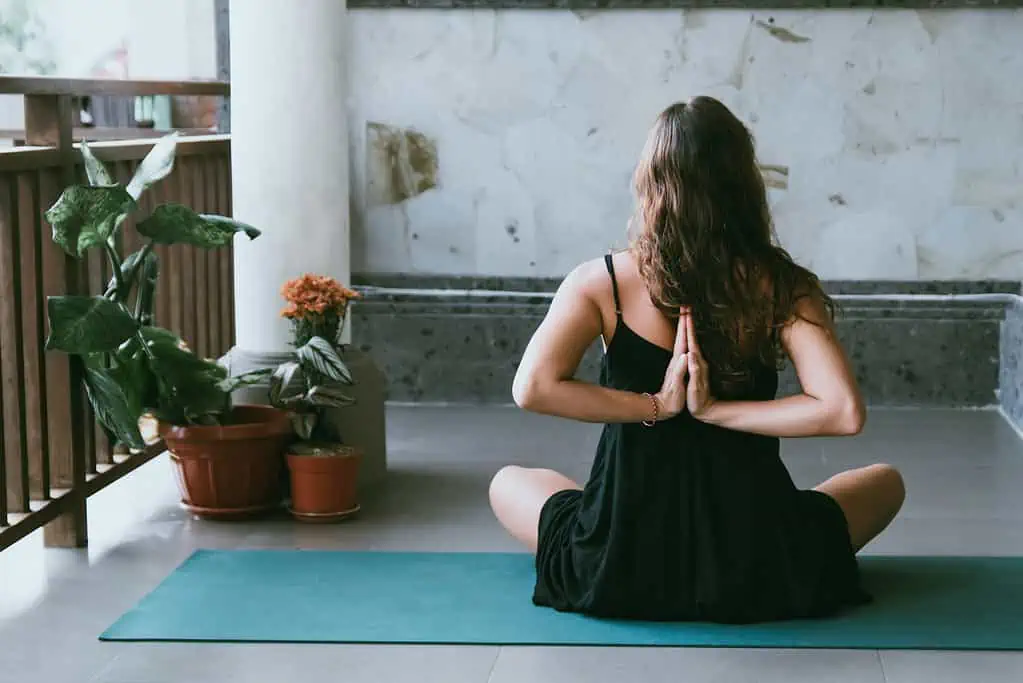
Understanding yoga Sanskrit poses are relatively straightforward as they share a handful of common modifiers, the same words used at the beginning or end of a pose name. So once you understand the meaning of these terms, you will quickly learn the rest of the pose name.
Asana
As mentioned, asana means pose or posture, one of the most commonly known Sanskrit words in yoga. However, did you know that the actual translation of asana is “seat”? This is because initially, asana solely meant the seated meditation position. It was only as the years went on that more and more yoga poses came about.
You may have noticed that every Sanskrit yoga pose name ends in “asana.” Just as we add “pose” to the end of the English term, the same is true for Sanskrit. For example, the triangle pose is Trikonasana. Trikon translates to “three corners,” meaning “triangle,” and asana means posture.
Urdhva
The Sanskrit word “Urdhva” means “upward” and describes yoga poses where the upper body faces upwards. One of the most common yoga poses with this term is Urdhva Mukha Svanasana (Upward-facing dog). Urdhva means upward, Mukha means face, and Svan means dog.
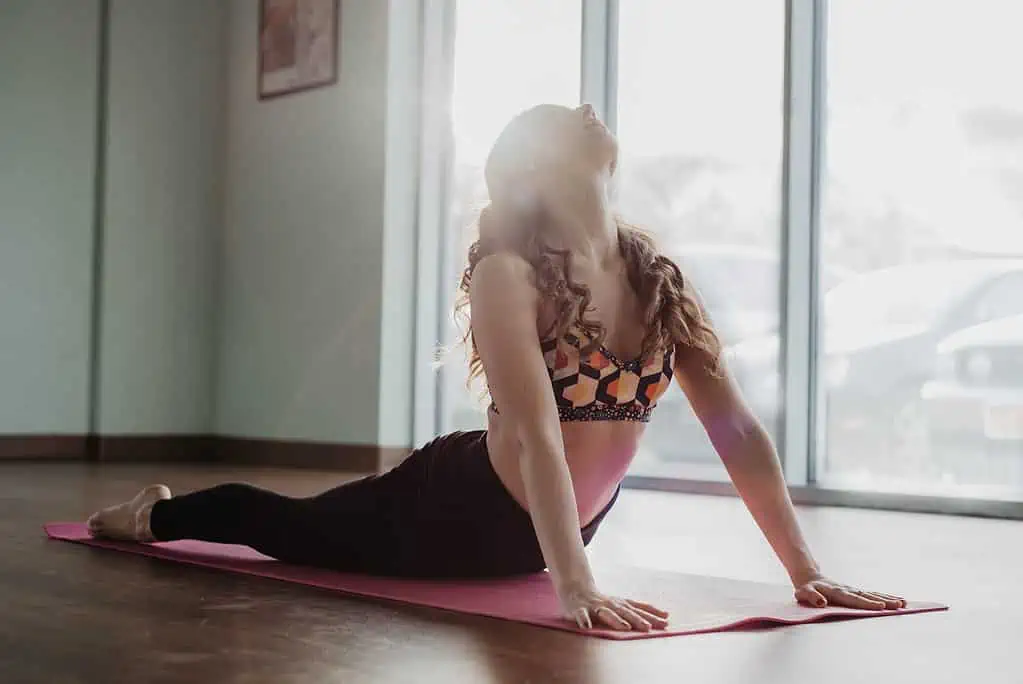
Adho
Adho is the opposite of Urdhva, meaning “down” or downward movement. In yoga poses, it is typically used with the word “Mukha” (face) to describe poses where you are facing down, such as Adho Mukha Svanasana (Downward-Facing Dog Pose).
Uttana
The translation of Uttana is “intense stretch” and describes poses that stretch the back, front, or side of the body. For example, Uttanasana is a standing forward bend with the legs together and the torso moving towards the thighs. Like the translation, this pose gives an intense stretch to the entire back of the body, including the spine and the legs.
Uttana is used in several pose names with the “u” removed. For example, Purvottanasana is an upward plank that stretches the front body.
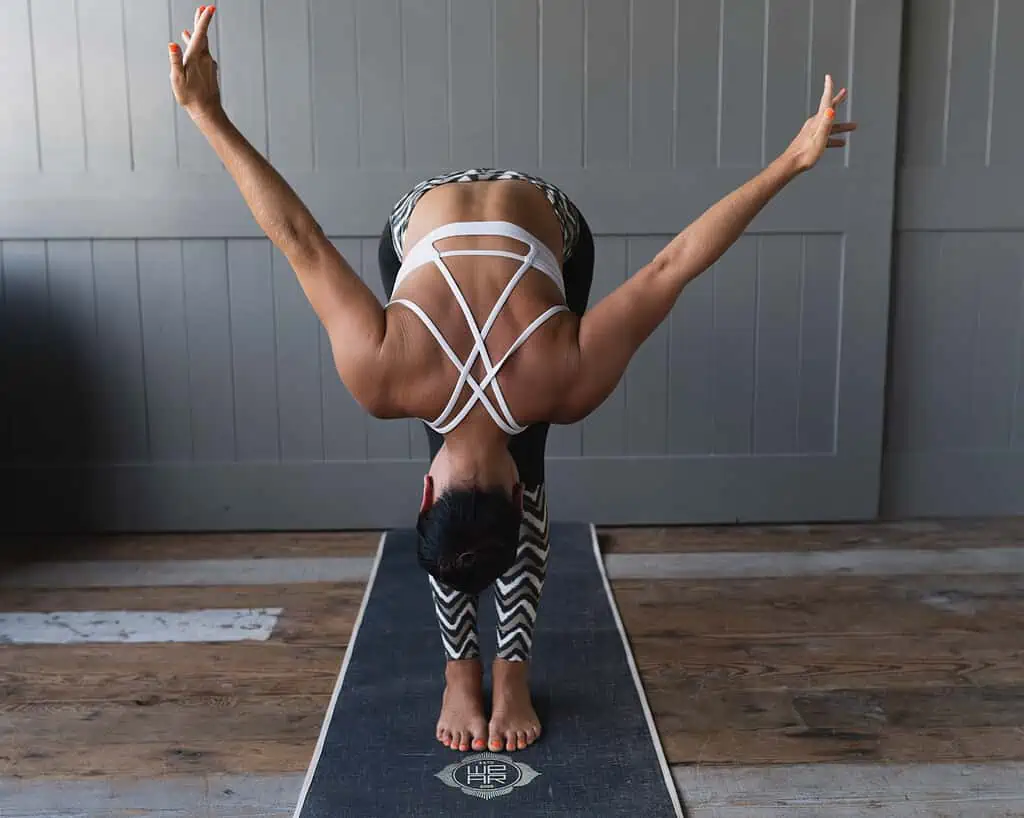
Utthita
Utthita translates to “extended” or “stretched” and is used in both pose names and variations of poses. However, as it simply means stretched in some poses (which is obvious), it is commonly dropped from many Sanskrit names. For example, the official name for the Triangle Pose is Utthita Trikonasana, but many yoga teachers will just call it Trikonasana.
Another popular pose where Utthita is used is Utthita Parsvakonasana (extended side angle pose), usually called side angle pose for short. In the second word of this pose name, “Parsva” means “side” as it stretches the side body, and “Kona” means “angle,” referring to the wide angle of the legs.
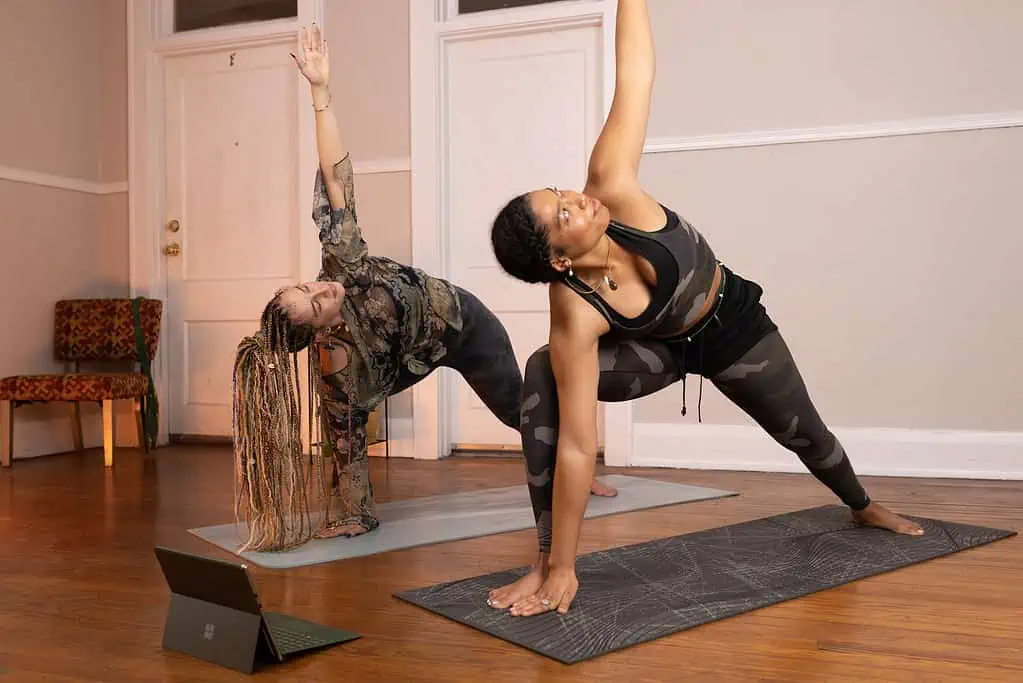
Supta
Supta means “supine” or “reclined” and, thus, refers to poses practiced while lying down. As many poses can be performed seated or lying down, Supta serves as a helpful word to differentiate the reclined version.
For example, Supta Baddhakonasana refers to the Supine Bound Angle Pose instead of the seated variation. Likewise, Supta Padangusthasana is a Supine Big Toe Pose, the reclined version of the standing balance, extended big toe pose.
Parivrtta
Parivrtta means “revolved” or “turned around” and describes poses that involve a twist or twisted variation of poses.
For example, Parivritta Trikonasana is a “revolved triangle pose,” and Parivritta Parsvakonasana is a revolved side angle pose. Both have the same leg positioning as the classic poses, but the torso is twisted, so the upper body faces in the other direction.
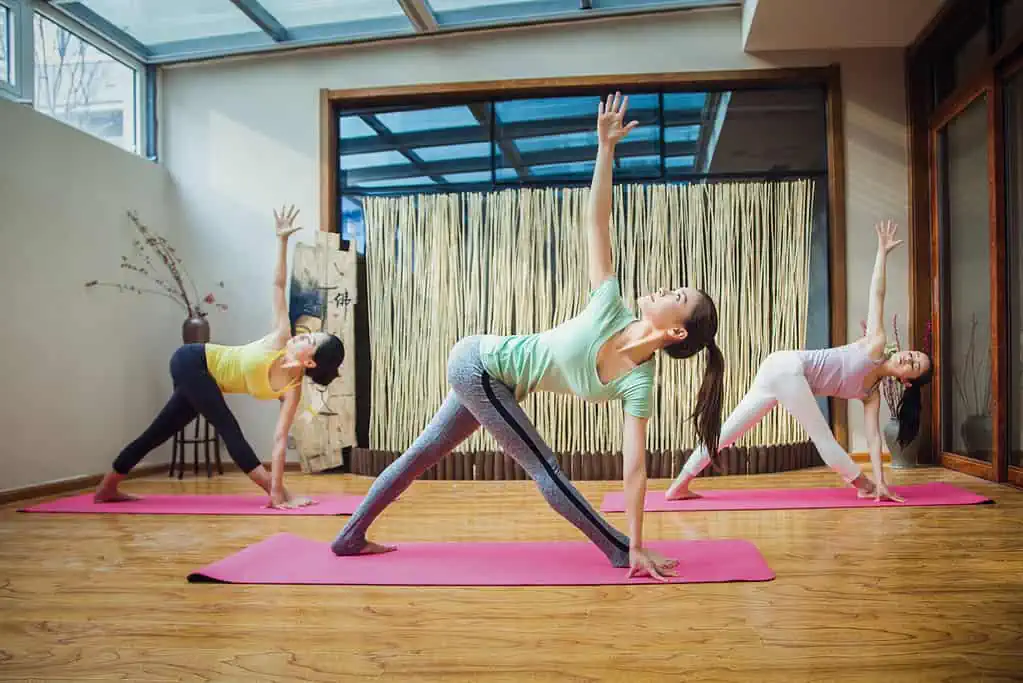
Salamba
Salamba means “supported” and describes a supported version of a pose, such as a headstand. However, note that Salamba means to support your body specifically with your hands or arms, not with props or another body part.
For example, Salamba Sirsasana is a supported headstand where you use the forearms to protect the neck and support the body weight. Likewise, Sphinx Pose is called Salamba Bhujangasana as it is the supported version of cobra pose, using the forearms to maintain the lift of the body.
Prasarita
Prasarita means “spread out” and typically refers to yoga poses with a wide-leg stance. However, it can mean any two body parts moving away from each other.
For example, Prasarita Padottanasana is the commonly practiced wide-legged standing forward bend. Likewise, Urdhva Prasarita Padottanasana is the seated version, where the upper body remains facing upwards as you balance on your sitting bones and raise the feet upwards, holding onto the big toes.
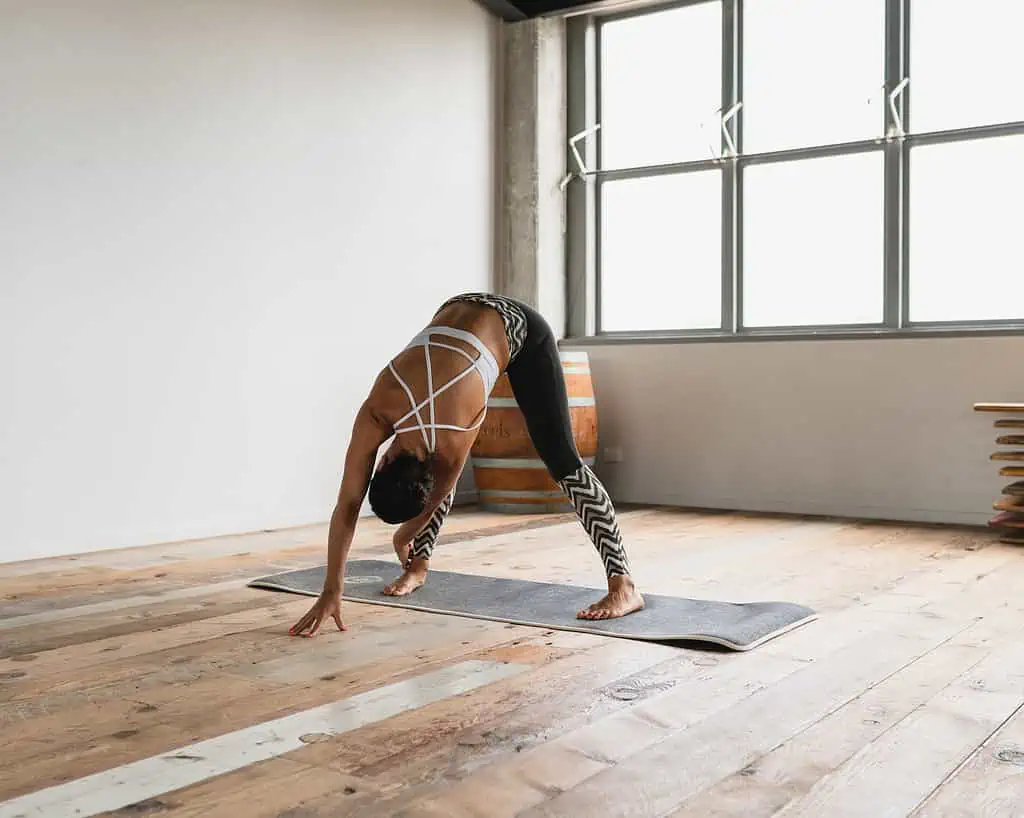
Parsva
Parsva means sideways and refers to stretching to the side or stretching the side of the body through a lateral stretch rather than a twist. For example, Parsva Upavista Konasana is a wide-leg seated position where you extend towards one leg by lowering one side body to the thigh and opening through the other side body.
It can also describe side variations of poses, such as Parsva Bakasana, the side crow. In this pose, instead of the legs being behind you, they come out to the side.
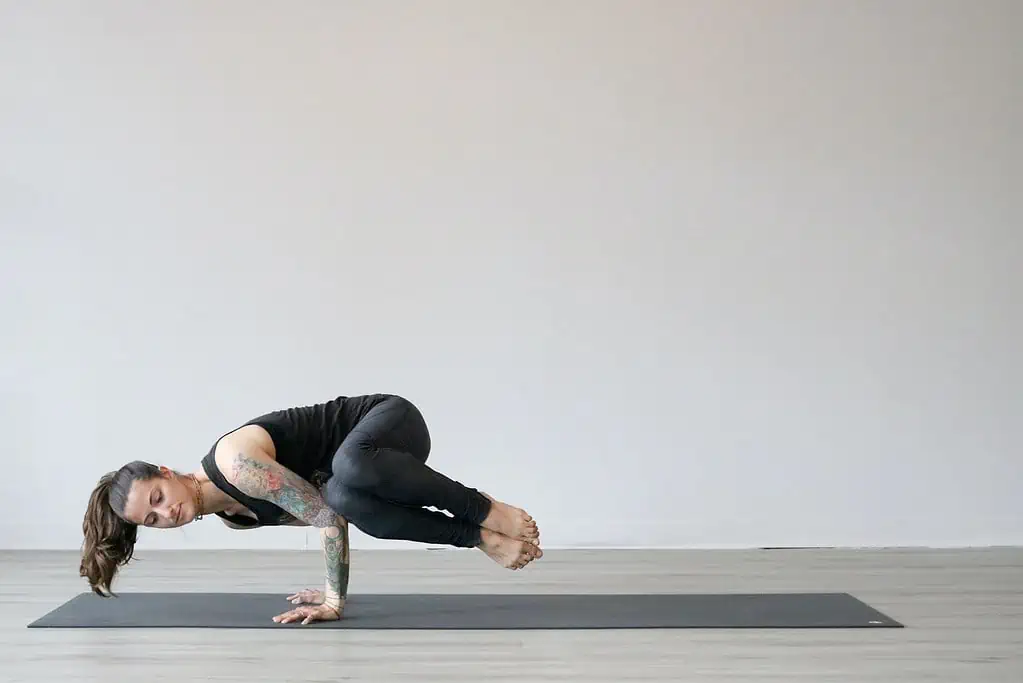
Other Common Yoga Sanskrit Names
Here are a few more Sanskrit words that often appear in yoga pose names.
Ardha
Ardha means “half” and can be used to describe an actual yoga asana, such as Ardha Chandrasana (half moon pose) or the half variations of a pose.
For example, Ardha Matsyendrasana (half lord of the fishes) is the half variation of the full pose Matsyendrasana. The leg positioning and twisting action are the same in both postures, but in the full version, the hands are bound behind the back, while in the half variation, there are not.
Paripurna
Paripurna means “full” and is included in the official name of the full variation of poses that have half variations, such as Matsyendrasana. However, many yoga teachers will drop that word when saying the pose’s name.
The same is true for Navasana (boat pose). The full variation with the legs extended is Paripurna Navasana, while the variation with the knees bent is Ardha Navasana. However, you will likely hear your yoga teacher call it Navasana.
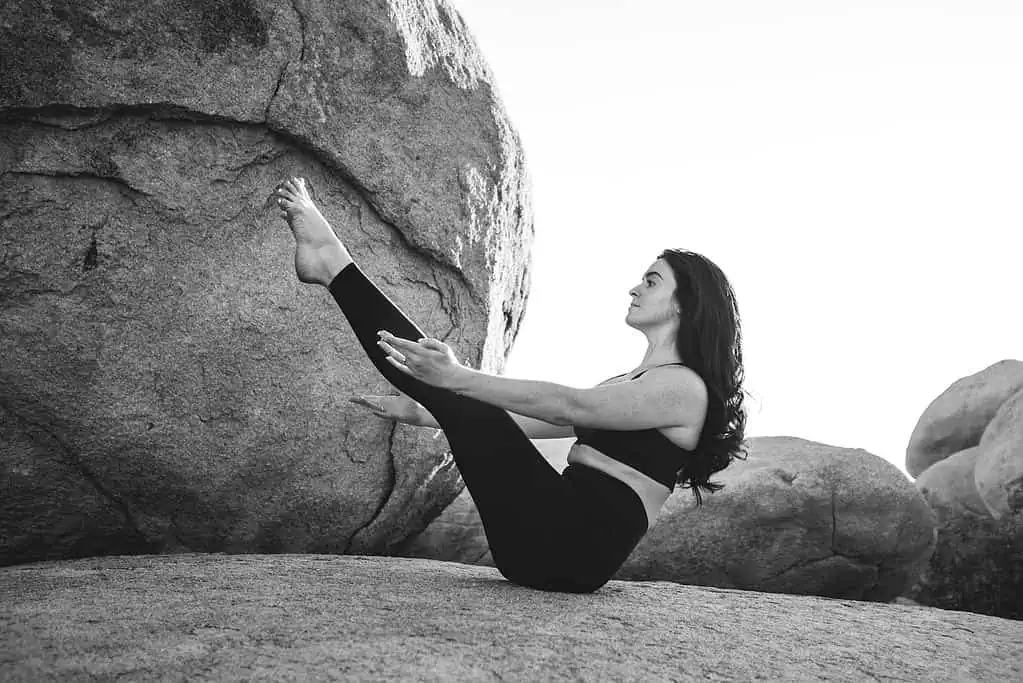
Baddha
Baddha means “bound” and can refer to the linking or binding of the legs or hands. For example, Baddha Konasana, which literally translates to bound angle pose but is also called Butterfly pose, is a gentle bind where you link the feet together by bringing the soles of the feet to touch.
Baddha Padmasana, however, involves a much deeper bind of the legs and also the arms. It is an advanced variation of Padmasana (lotus pose), where you cross the arms behind you and grab hold of the opposite big toes.
Baddha Utthita Parsvakonasana is a bound side-angle pose, an advanced variation where you bind your hands behind your lower back and open the chest and shoulder.
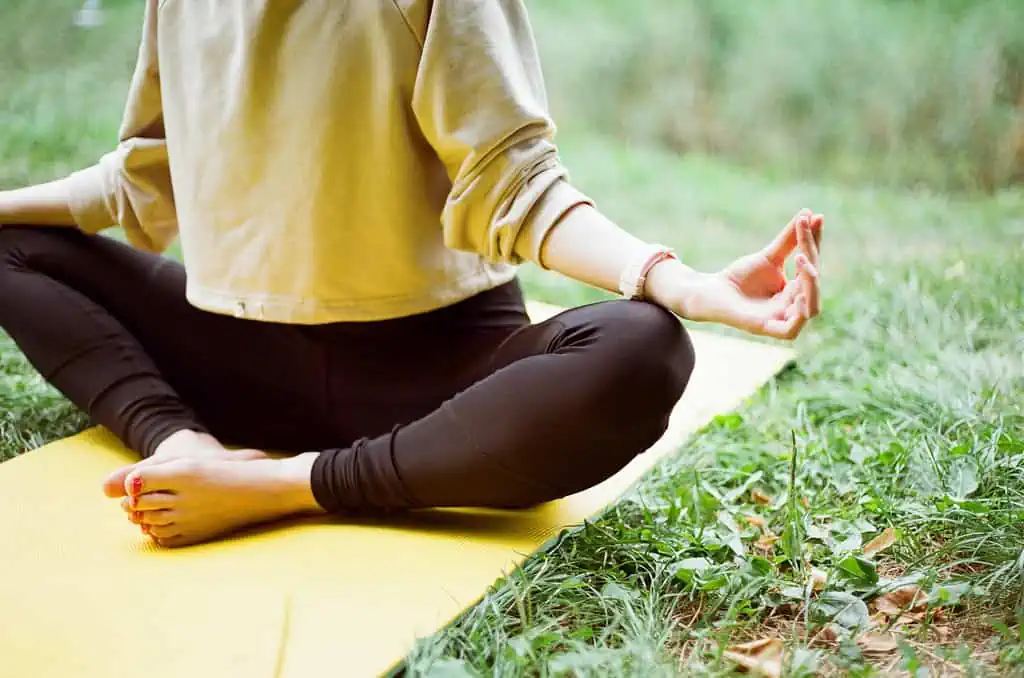
Hasta
Hasta means “hand” but refers to hand positioning in yoga asana. It is used in the names of many yoga postures where one or both hands point in a particular direction, touch the ground, or reach the foot.
For example, in Utthita Hasta Padangusthasana (Extended Hand-to-Big-Toe Pose), Hasta refers to the hand extending and reaching the foot. Meanwhile, Urdhva Hastasana (Upward Hands Pose) relates to the hands extending up to the sky, and Dwi Hasta Bhujasana is a challenging arm balance where both hands are rooted on the floor.
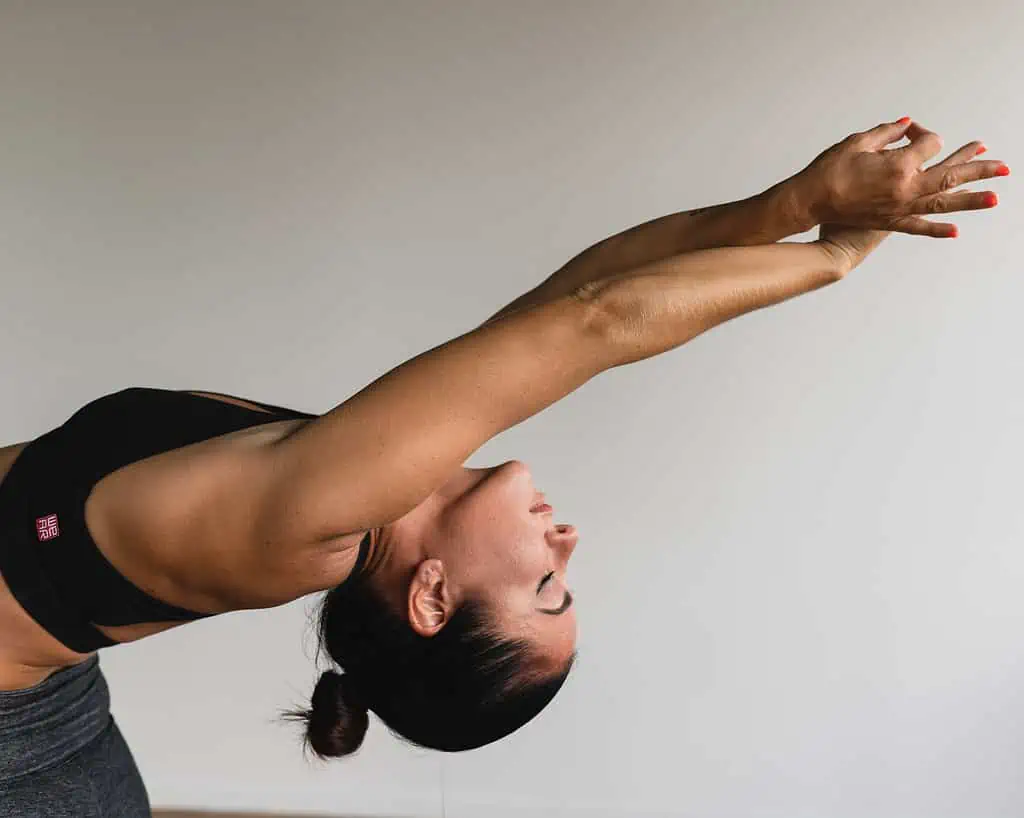
Pada
Pada means “foot” and describes the direction or positioning of one or both feet in a yoga pose. Like Hasta, Pada is included in a pose name if the foot positioning is particularly important.
For example, it appears in Splits Pose (Urdhva Prasarita Eka Padasana), where the focus is on reaching one foot to the sky while keeping the other planted on the ground. Another example is Eka Pada Bakasana, a one-legged version of Crane Pose, where one leg is extended to the sky behind.
Eka
You may have noticed the word Eka in the above two examples. Eka does not relate to feet in any way; it means “one.” So in those two examples, it refers to the fact that only one foot is reaching upward.
Another example is Eka Pada Rajakapotasana, which translates to the one-legged (foot) king pigeon pose.
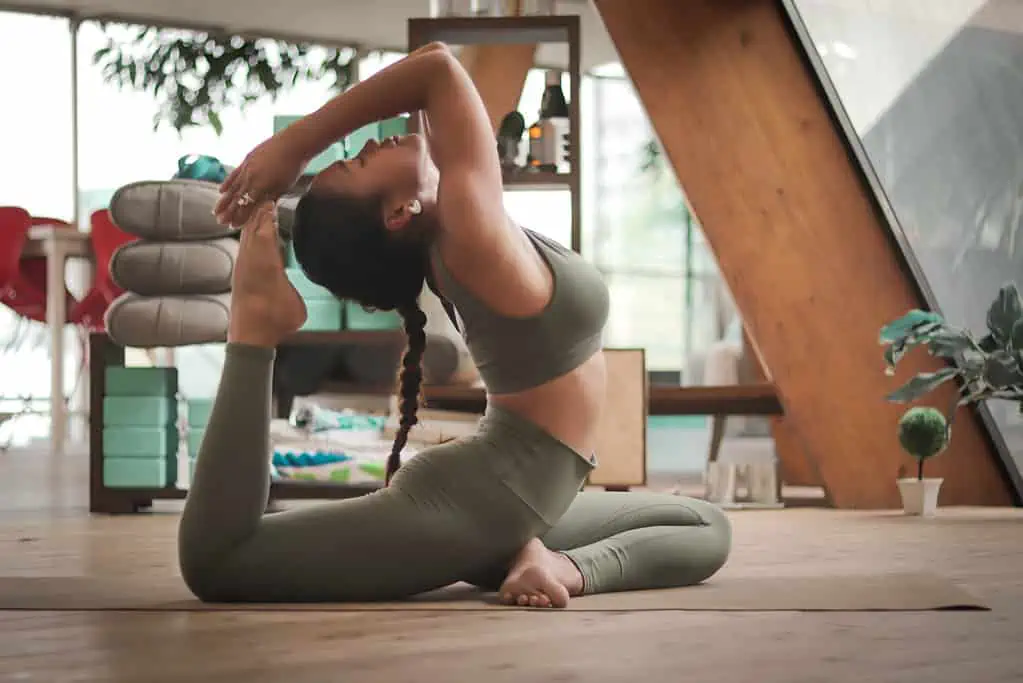
Dwi
While Eka means one, Dwi means “two.” You see this word in a few yoga pose names to describe the positioning of both feet or hands. For example, the challenging arm balance Dwi Hasta Bhujasana refers to two hands being on the floor.
Complete List Of English To Sanskrit Yoga Pose Translations
Now that you have a basic understanding of the yoga Sanskrit pose names, here is a complete list of the most popular Hatha yoga poses with both their English and Sanskrit names and a translation breakdown.
Standing Poses
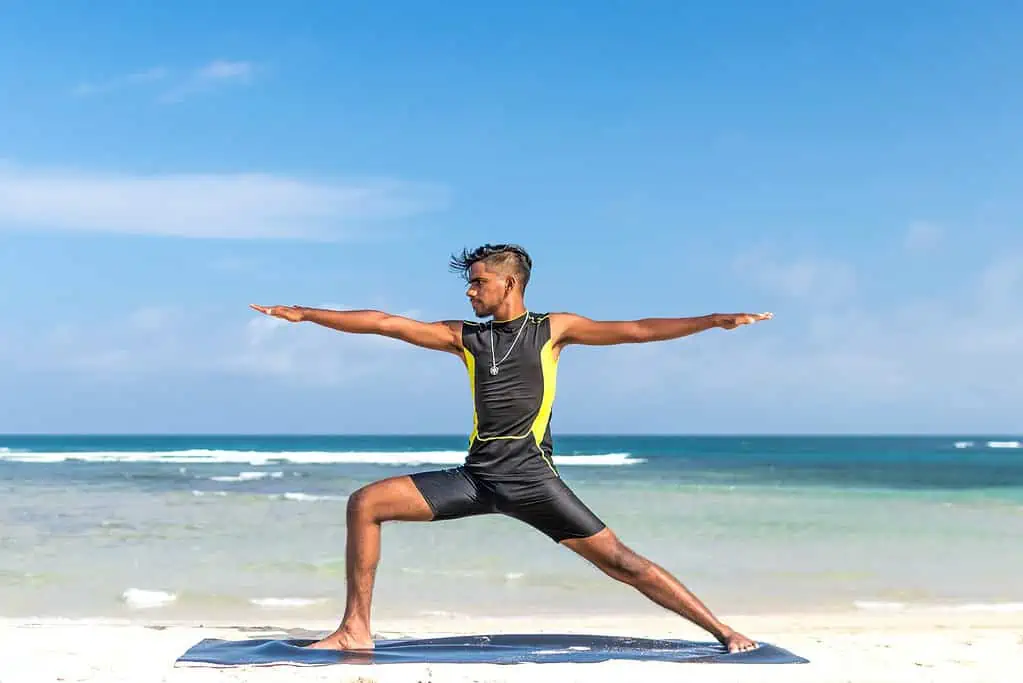
- Mountain Pose = Tadasana (Tada = mountain)
- Chair Pose = Utkatasana (Utkata = fierce/powerful)
- Upward Hands = Urdhva Hastasana (Urdhva = upward, Hasta = hand)
- Standing Forward Bend Pose = Uttanasana (Uttana = intense stretch)
- Triangle Pose = Trikonasana (Trikon = triangle)
- Revolved Triangle Pose = Parivritta Trikonasana (Parivritta = revolved, Trikon = triangle)
- Warrior Pose = Virabhadrasana (Vira = hero/courageous, Bhadra = good/peaceful)
- Pyramid Pose/ Intense Side Stretch Pose = Parsvottanasana – (Parsva = side, Uttana = intense stretch)
- Side Angle Pose = Utthita Parsvakonasana (Utthita = extended, Parsva = side, Kona = angle)
- Revolved Side Angle Pose = Parivrtta Parsvakonasana (Parivrtta = revolved, Parsva = side, Kona = angle)
- Wide-Legged Standing forward Bend Pose = Prasarita Padottanasana (Prasarita = spread out, Pada = foot, Uttana = intense stretch)
- Splits Pose = Urdhva Prasarita Eka Padasana (Urdhva = upward, Prasarita = spread out, Eka = one, Pada = foot)
Balance Poses
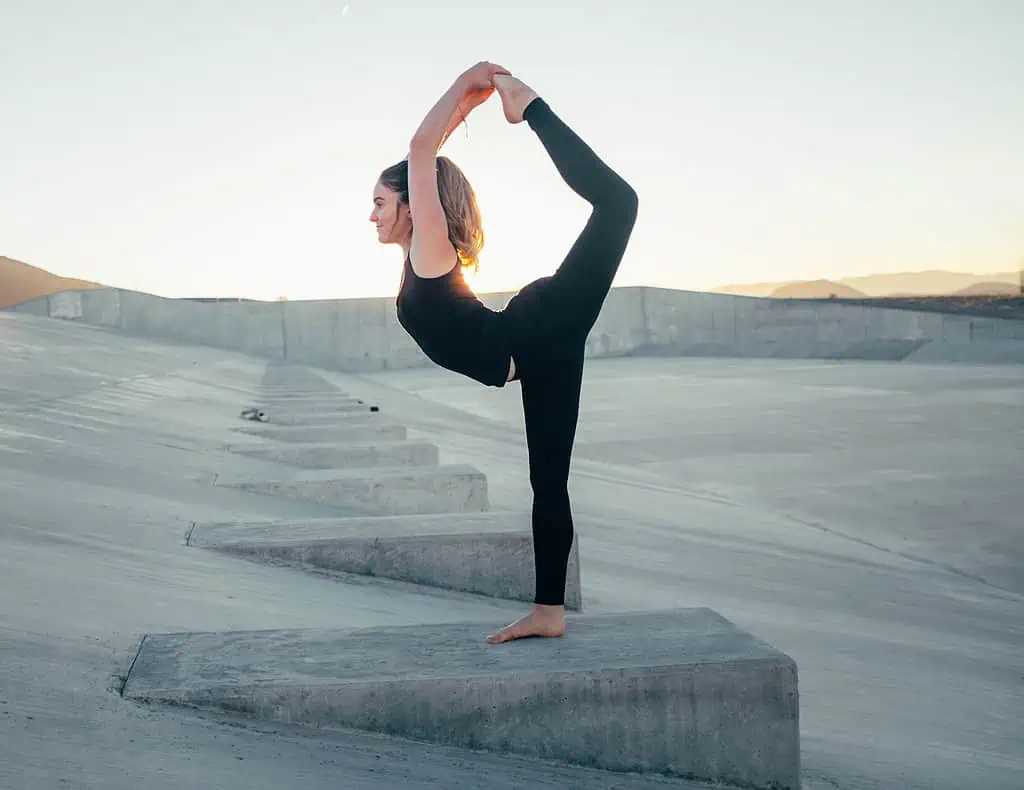
- Half Moon Pose = Arda Chandrasana (Arda = half, Chandra = moon)
- Revolved Half Moon Pose = Parivritta Arda Chandrasana (Parivrtta = revolved, Arda = half, Chandra = moon)
- Tree Pose = Vrksasana (Vrksa = tree)
- Extended Hand To Big Toe Pose = Utthita Hasta Padangusthasana (Utthita = extended, Hasta = hand, Pada = foot, Angustha = big toe)
- Eagle Pose = Garudasana (Garuda = eagle)
- Dancer’s Pose = Natarajasana (Nata = dancer, Raja = king)
- Crane/Crow Pose = Bakasana (Baka = crane)
Inversions
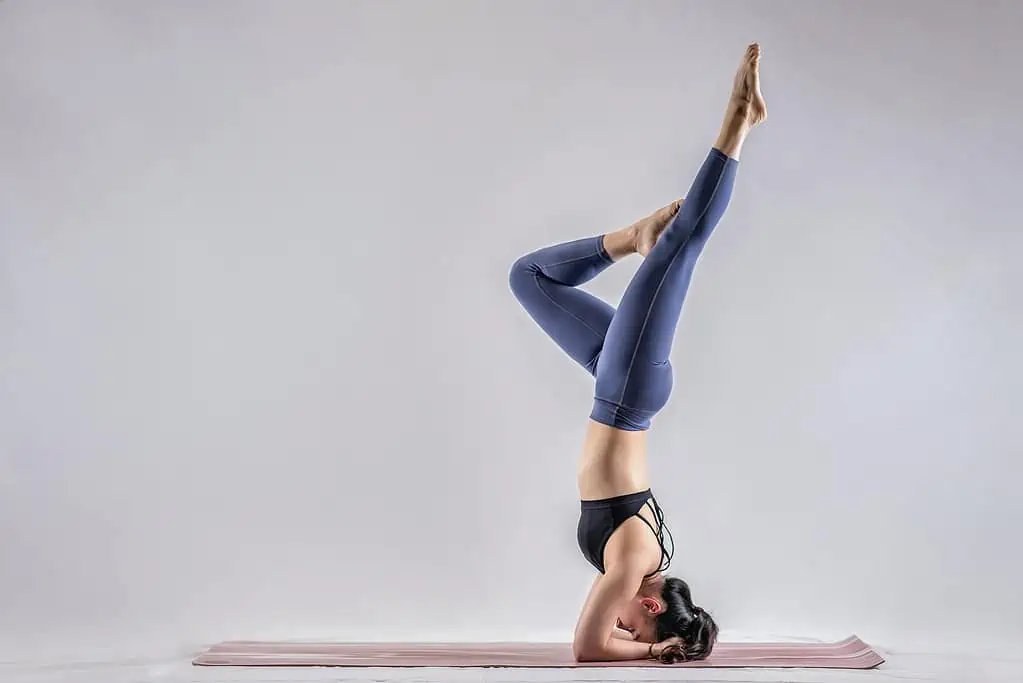
- Downward-Facing Dog = Adho Mukha Svanasana (Adho = downward, Mukha = facing, Svan = dog)
- Supported Headstand Pose = Salamba Sirsasana (Salamba = supported, Sirsa = head)
- Tripod Headstand = Mukta Hasta Sirsasana (Mukta = liberated, Hasta = hand, Sirsa = head)
- Handstand = Adho Mukha Vrksasana (Adho = downward, mukha = facing, Vrksa = tree)
- Shoulder Stand = Salamba Sarvangasana (Salamba = supported, sarva = all, anga = limb)
Backbends
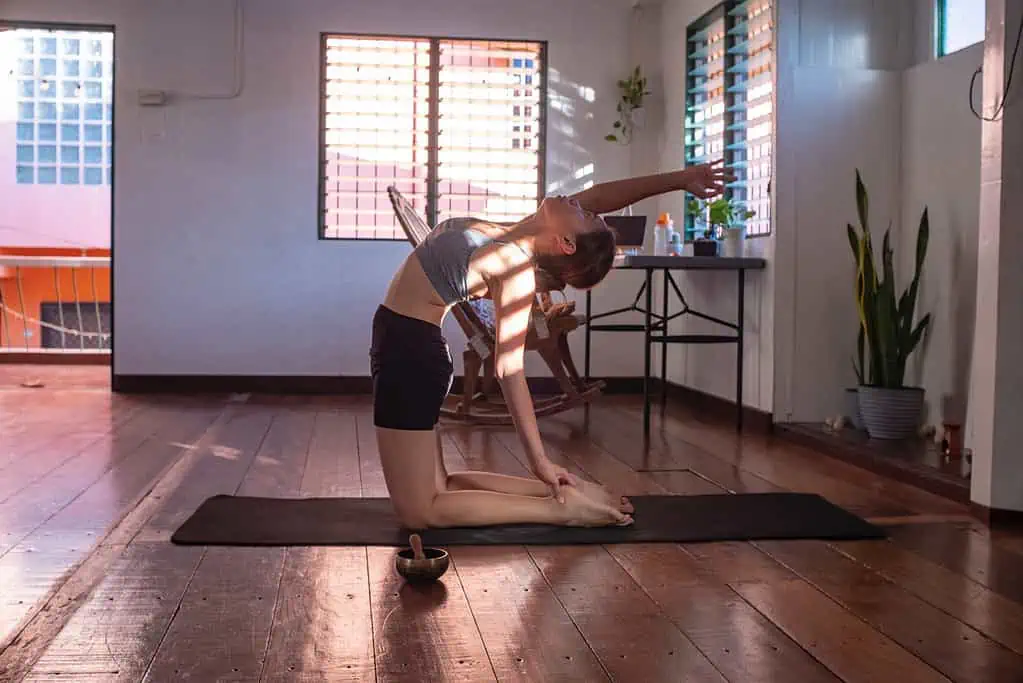
- Cobra Pose = Bhujangasana (Bhujanga = snake/serpent)
- Upward Facing Dog = Urdhva Mukha Svanasana (Urdhva = upward, Mukha = facing, Svan = dog)
- Sphinx Pose = Salamba Bhujangasana (Salamba = supported, Bhujanga = snake)
- Locust Pose
- Wheel (Upward Bow) = Urdva Dhanurasana (Urdhva = upward, Dhanur = bow-shaped, curved or bent)
- Camel Pose = Ustrasana (Ustra = camel)
- Fish Pose = Matsyasana (Matsya = fish)
Seated Poses
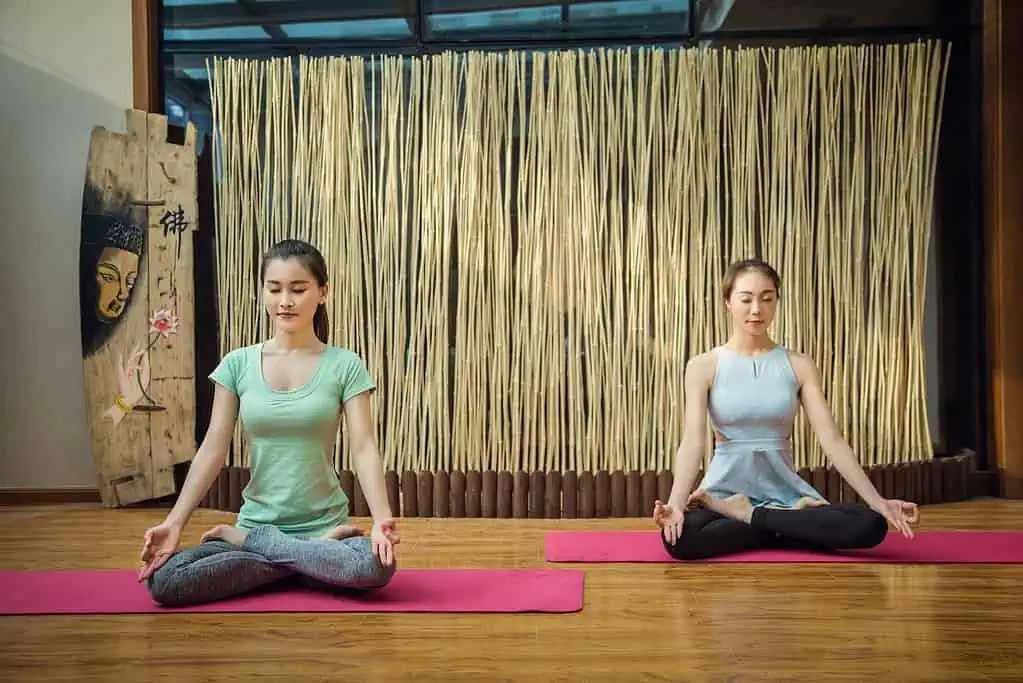
- Seated Forward Bend Pose (with legs together) = Paschimottanasana (Paschima = back of the body, Uttana = stretch)
- Half Lord of the Fishes Pose = Ardha Matsyendrasana (Ardha = half, Matsya = fish, Indra = lord)
- Boat Pose = Navasana (Nava = boat)
- Bound Angle Pose = Baddha Konasana (Baddha = bound, Kona = angle)
- Lotus Pose = Padmasana (Padma = lotus)
- Half Lotus Pose = Ardha Padmasana (Ardha = half, Padma = lotus)
- Cow Face Pose = Gomukhasana (Go = cow, Mukha = face)
- King Pigeon Pose = Eka Pada Rajakapotasana (Eka = one, Pada = leg/foot, Raja = king, Kapota = pigeon)
Supine Poses

- Supine Big Toe Pose = Supta Padangusthasana (Supta = reclined, Pada = foot, Angustha = big toe)
- Supine Bound Angle Pose = Supta Baddha Konasana (Supta = reclined, Baddha = bound, Kona = angle)
- Supine Hero = Supta Virasana (Supta = reclined, Vira = hero/brave person)
- Corpse Pose = Savasana (Sava = corpse)
What is Sanskrit?
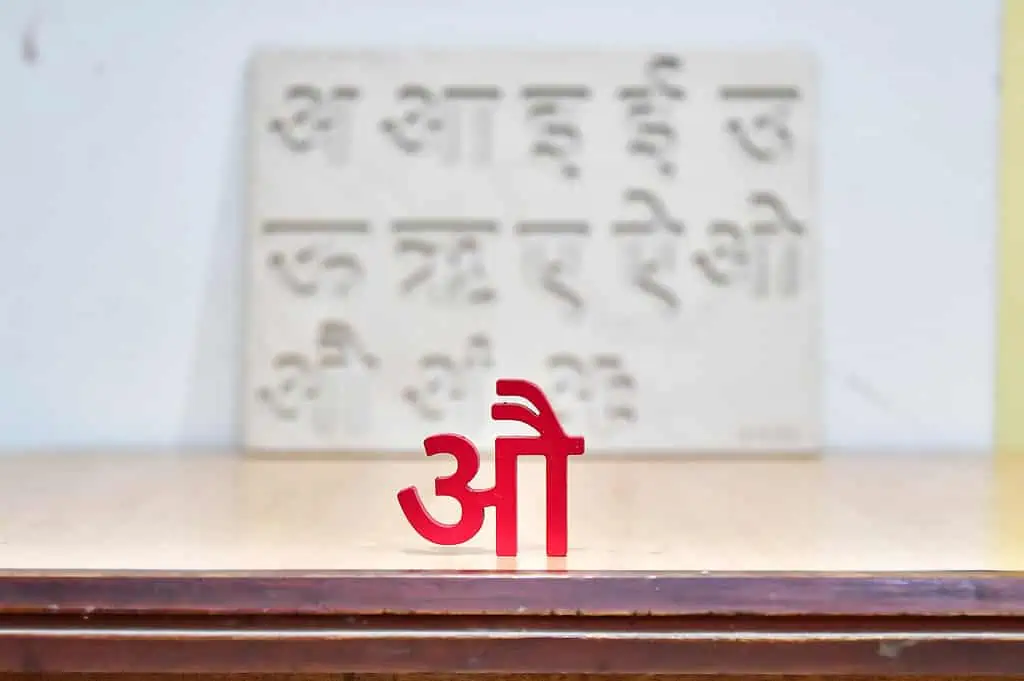
Sanskrit is an ancient Indian language used in the Hindu religion. Sanskrit was the predominant language in India until around the 13th century. Although it is not used in spoken language today, it is still used in Hindu prayers, rituals, and Buddhist chants.
Sanskrit is also considered an incredibly sacred language as it was used in the Vedas, the first Hindu texts and the earliest accepted scriptures of the human race. Moreover, Sanskrit is unique because it encompasses a precise, spiritually-technical vocabulary with potent vibrational harmonic quality.
Why are Sanskrit words Used To Describe Yoga Poses?
The Sanskrit language was used in all ancient yogic texts, such as Patanjali’s Yoga Sutras. These texts detailed the yoga pose names in Sanskrit, which were later translated into English. Thus, the Sanskrit terms are the original yoga pose names and are still used today by many yoga teachers to honor the practice’s ancient tradition.
Asana, which most people know to mean pose, is also a Sanskrit name and was detailed in the Yoga Sutras as the third of the eight limbs of yoga. As all yogic teachings stem from ancient scriptures, there are Sanskrit words to describe all aspects of yoga, including yogic philosophy. However, this article will focus on the yoga Sanskrit names for the physical postures.
Resources For Improving Your Sanskrit Knowledge
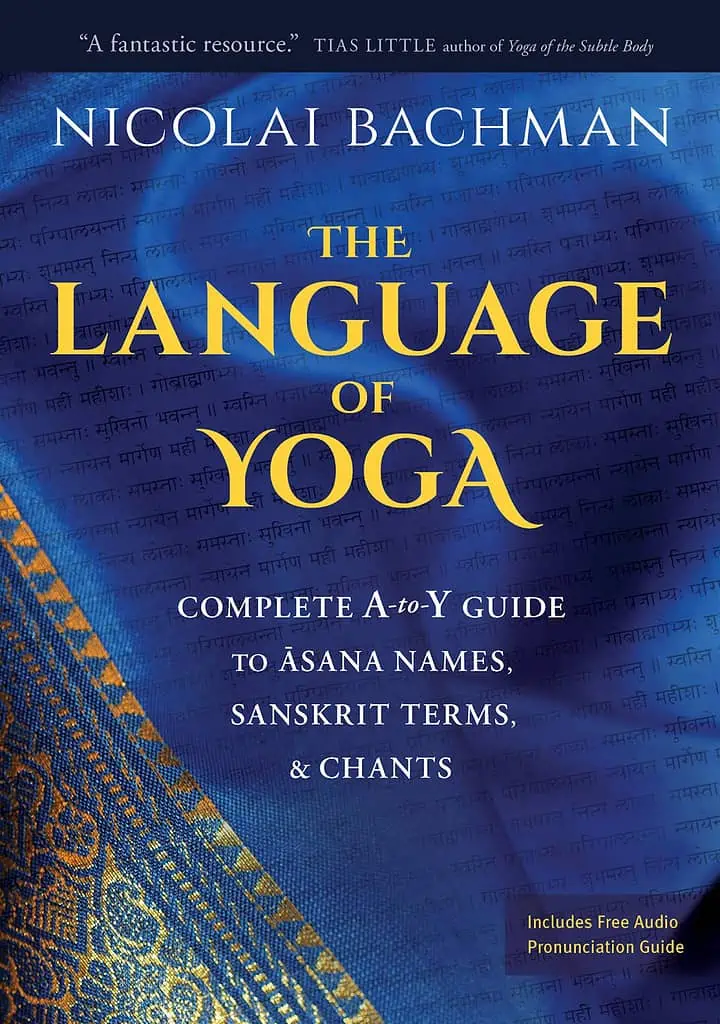
If you’re planning to become a yoga instructor, are keen to advance in your yoga practice, or want to learn more about where yoga comes from, you may want to expand your Sanskrit knowledge beyond this guide.
I highly recommend the book The Language of Yoga by Nicolai Bachman as it contains an A to Z list of over 200 Sanskrit pose names and various other important Sanskrit terms and chants. Plus, when you purchase the book, you’ll get downloadable audio files with the pronunciation of many of the posture names included in the book.
If you’re looking for a free resource to learn how to pronounce yoga Sanskrit pose names, check out the excellent Sanskrit Yoga Asana Glossary by Yog Temple.
Final Thoughts On Yoga Sanskrit Poses
You don’t have to be an advanced yogi to get your head around the Sanskrit language. Once you understand the meaning of the most common words used in the pose names, you will quickly pick it up.
Be sure to bookmark this page to come back to whenever you need to refresh your memory!


